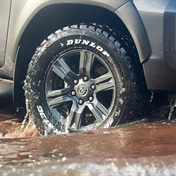
Switzerland - There are few people outside of professional racing and stunt driving who have dared and survived the crashes Richard Hammond has.
In 2006, whilst piloting a Vampire jet-powered dragster, Hammond survived a crash at 463km/h – caused by tyre failure. Little more than a decade later, the affectionately nicknamed ‘Hamster’ has survived yet another extraordinary brush with that ‘void’ which should never be tested, beyond the fold of supercar adhesion limits.
By now we’ve all seen the video, those corresponding images and know what happened in Switzerland, at the Hemberg hill climb circuit. Hammond misjudged his entry speed into a sharp corner at the end of a segment being filmed for the forthcoming Grand Tour season, and the Rimac supercar he was piloting, ended up rolling down one of those characteristically peaceful Swiss embankments, onto a perfectly kept meadow.
'The Grand Tour' host Richard Hammond injured in car crashWhat happened when the momentum of Hammond’s crash came to an end, and he had the opportunity to scramble away from the Rimac he was driving, to safety, is the true issue. The car started to burn.
Supercars burn. This one shouldn’t
Supercars burning, especially after they’ve crashed and fuel encounters scalding exhausts or engine component surfaces, is nothing new. But the Rimac Concept One Hammond was driving, is no ordinary supercar. Its output and performance numbers are extraordinary: 1000kW and 0-100km/h in 2.5 seconds.
But what is most notable about the Rimac Concept One, is that it carries no fuel. This incredibly fast car is battery powered and therefore Hammond’s crash begs the rather troubling question, if the Rimac had no 95 octane onboard, why did it catch fire?
Image: Amazon
The preliminary answer appears to be heat. And oil. If you’ve ever experience the heat surge from your laptop or device, uncomfortably warming either your thighs or palm, you’ll know that modern lithium-ion batteries can generate tremendous heat surges in operation. In the Rimac Concept One, you are multiplying that issue exponentially.
Electric cars generate a lot of heat as their batteries discharge at a high rate, to provide the required performance. Hammond’s hill climb run would have taxed the Concept One’s batteries and electric motors to their utmost, draining those batteries of energy and testing the electric motors, which are burdened with converting all that stowed energy to 1000kW.
Allowing the entire system to cope with its heat generation are oil-coolers, which manage any thermal issues around the permanent magnet motors, of which the Rimac has four. Those motors also happen to be located in each wheel, which mean if you manage to kerb a Rimac Concept One hard enough, or flip it and the wheels break off, you have oil leaking onto a lot of very hot electric wiring. This, in all probability, is what ignited Hammond’s car after his crash.
Image: Amazon
Better packaging required
The wisdom to be gleaned? Electric car manufacturers need to consider just how much heat the battery packs and magnet motors used in their vehicles generate, and the risk of high voltage systems and wiring present throughout the structure.
If oil coolers are necessary, they should have reservoirs and plumbing which is puncture proof, and the issue is that electric vehicle design has placed a premium on the torque vectoring benefit of having motors in the wheels, which make any cooling system particularly vulnerable to shearing during a substantial impact.
Supercars always test the limits of engineering, refining concepts which work in theory. If electric cars are going to become mainstream, the technology they apply must work in the high-performance automotive realm too – not merely as urban runabouts.
Richard Hammond in hospital: 'I've binned it...again'
Richard Hammond’s crash, and the curious detail of his ‘pure electric’ car catching fire in much the way an internal combustion car would be expected to, could be a greatly beneficial moment in the history of electric vehicle design.
The one where we all realised that batteries and electric motors run warm, and if oil is kept on-board to cool those electric motors, the risk of fire is a lot higher than any of us currently anticipate.




 Publications
Publications
 Partners
Partners
















